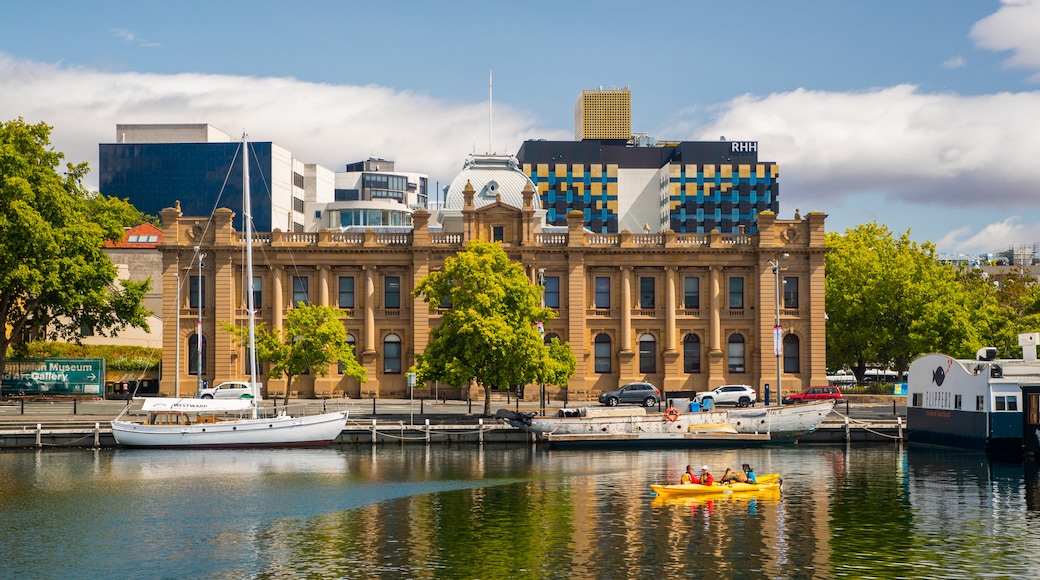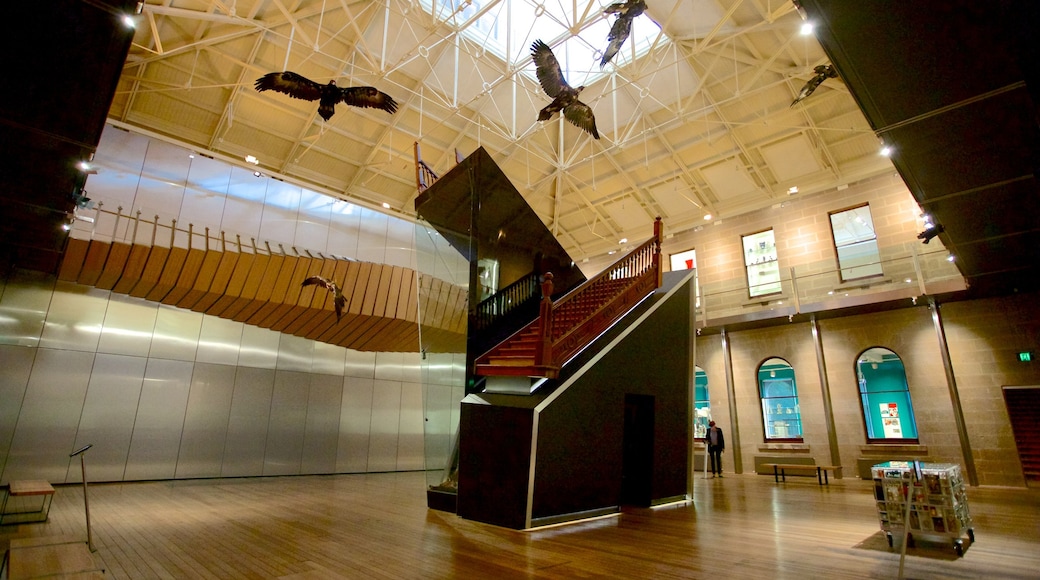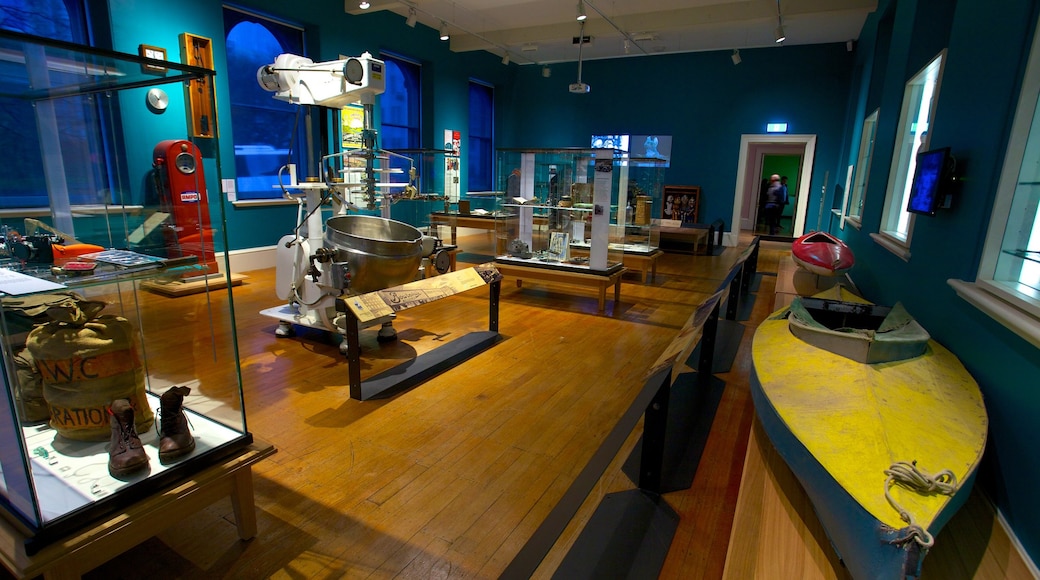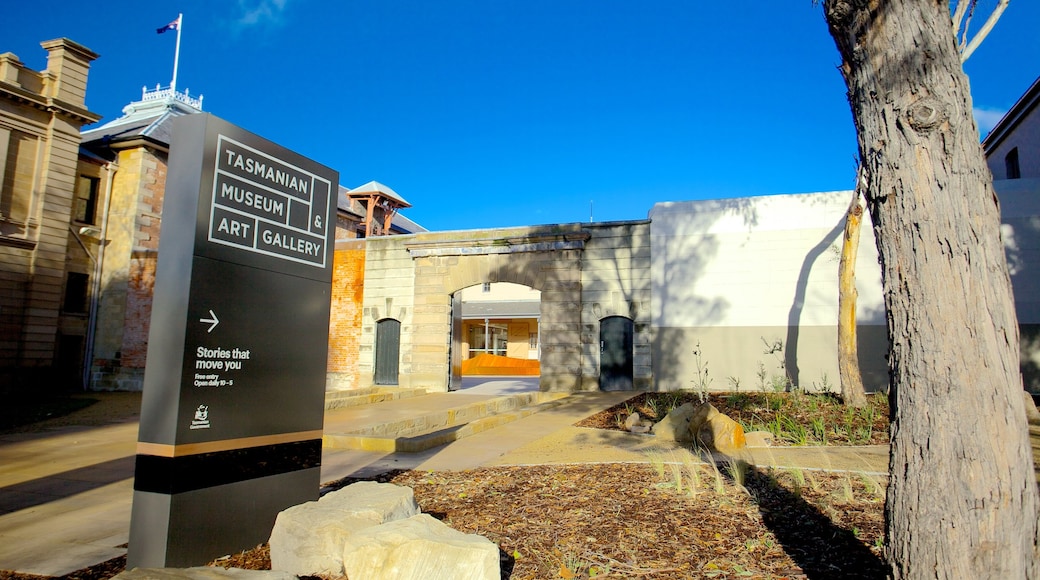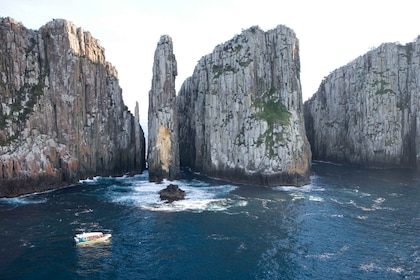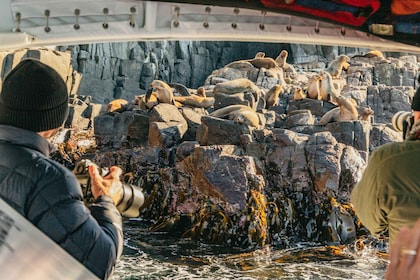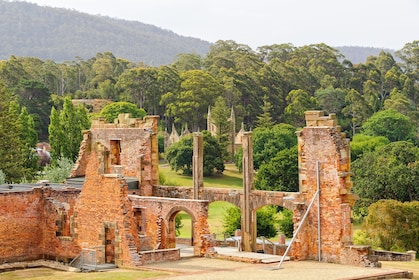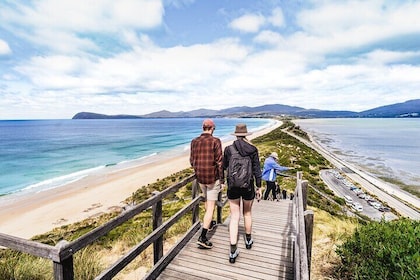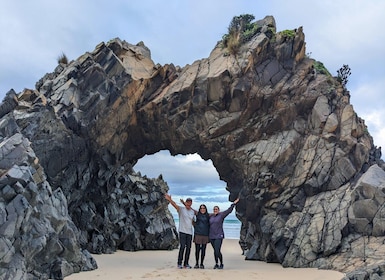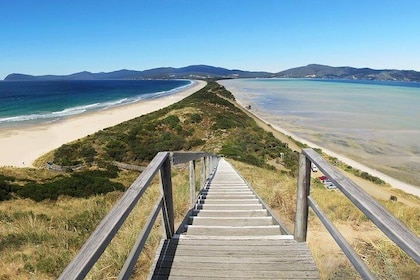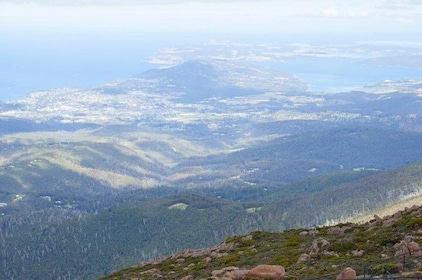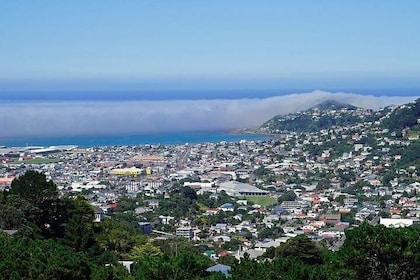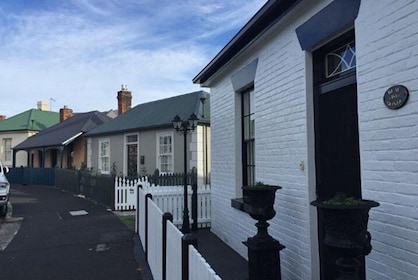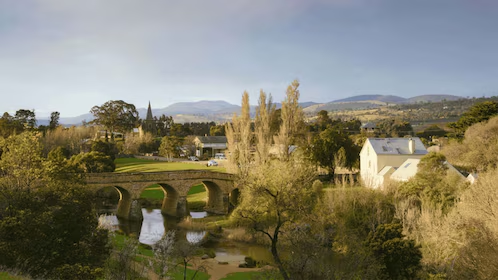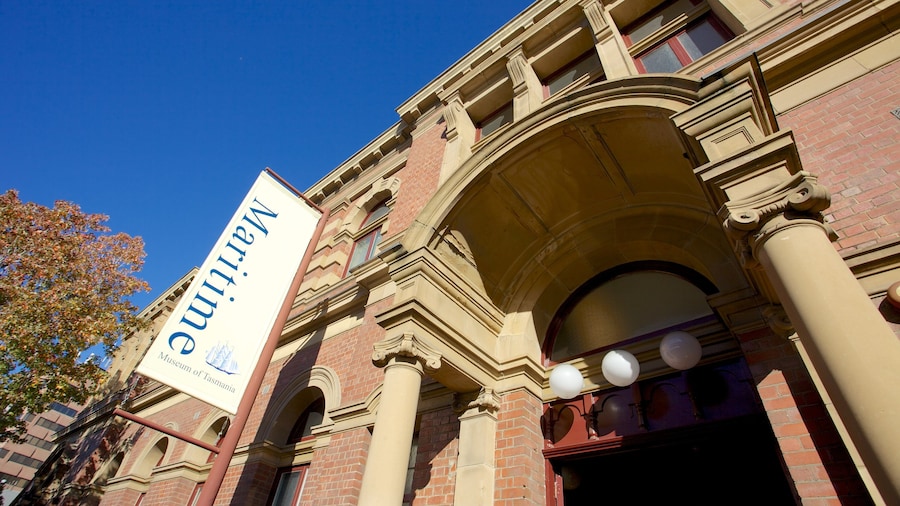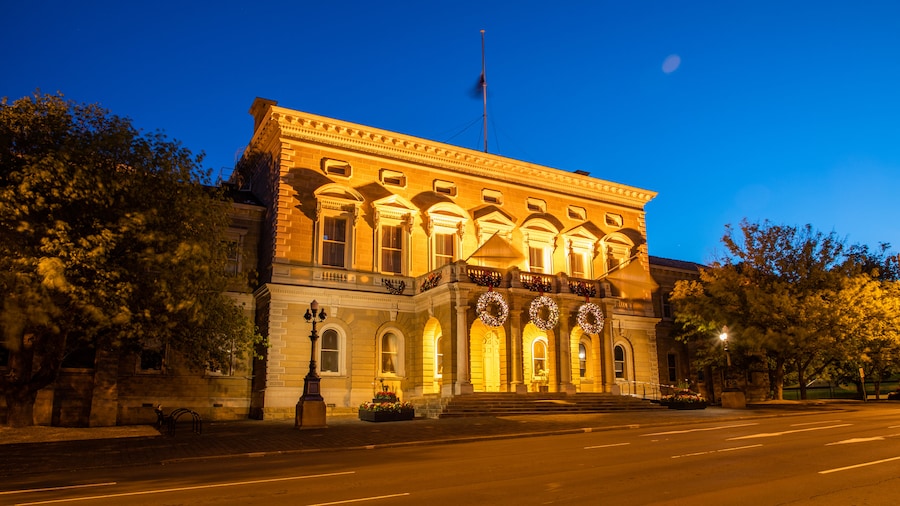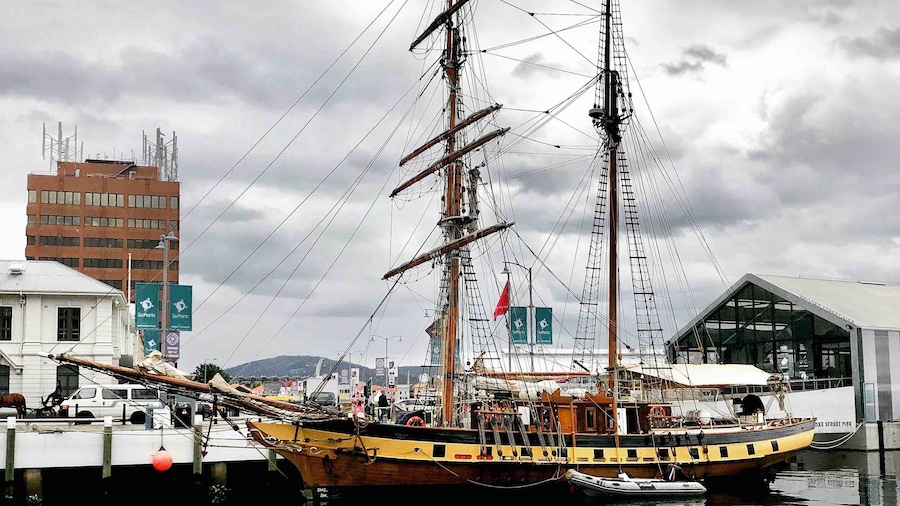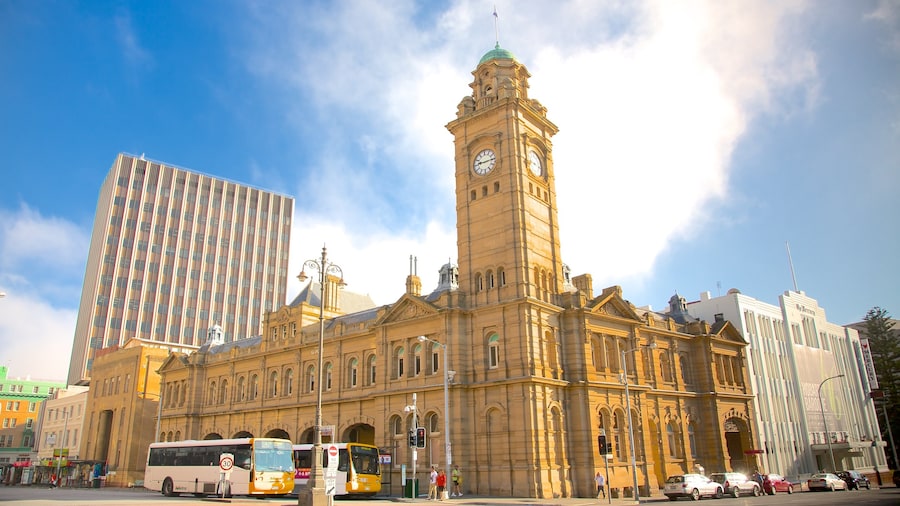Immerse yourself in the state’s history and art at these 19th-century waterfront buildings where collections include an exhibit on the fabled Tasmanian tiger.
The Tasmanian Museum and Art Gallery, affectionately known as TMAG, is housed within a collection of historic 19th-century buildings on the waterfront at Sullivan’s Cove. Start your journey in the Bond Store Galleries, built in 1823, where the history of Tasmania’s settlement is projected onto the walls. Stories told through artefacts, slides and displays of the pre-settler landscape give insight into the conflict between European settlers and the Tasmanian Aboriginal clans. The main museum houses an incredible collection of natural artefacts, photography, paintings, indigenous culture and art, as well as colonial furniture, textiles and silverware.Expand your understanding of indigenous culture in the Ningina Tunapri exhibit, where items such as a bark canoe, woven baskets and shell jewellery offer a picture of daily life of Tasmania’s First Peoples. Get close to some incredible ancient rock carvings and learn about the cultural practices that continue today.Don’t miss the Earth and Life gallery’s displays of Tasmanian wildlife, particularly the section dedicated to the thylacine, or Tasmanian Tiger, extinct since 1936. Articulated skeletons and footage tell the tale of this fascinating marsupial, which has captured imaginations in Australia and abroad. On the second floor, modern history and art displays explore themes of dispossession, power and politics, and the Islands to Ice exhibit shows off Tasmania’s proud heritage as a base for Antarctic explorations. Entry to the TMAG is free, and displays also include temporary feature exhibitions, which may have an entry fee. The site is in central Hobart and Metro buses stop nearby. There is a metered parking lot in front of the main entrance.For opening times, please refer to the official TMAG website.
TMAG also runs two historic houses. Narryna House in Battery Point displays art and furnishings which recreate the domestic life of a 19th-century sea merchant, and is open Tuesday to Sunday. Markree House dates to the antebellum period, and contains original furnishings, heirlooms and domestic crafts and artwork. The house is open during summer on Saturdays, or for prearranged tours from Tuesday to Sunday.
